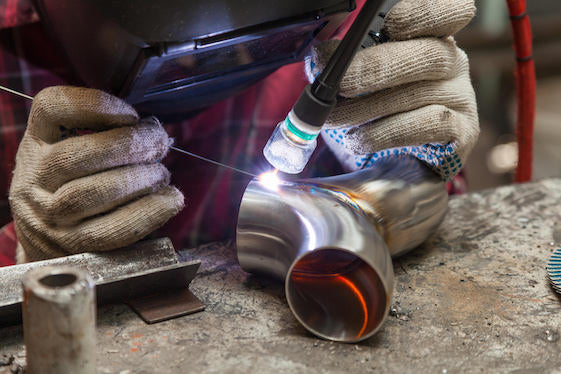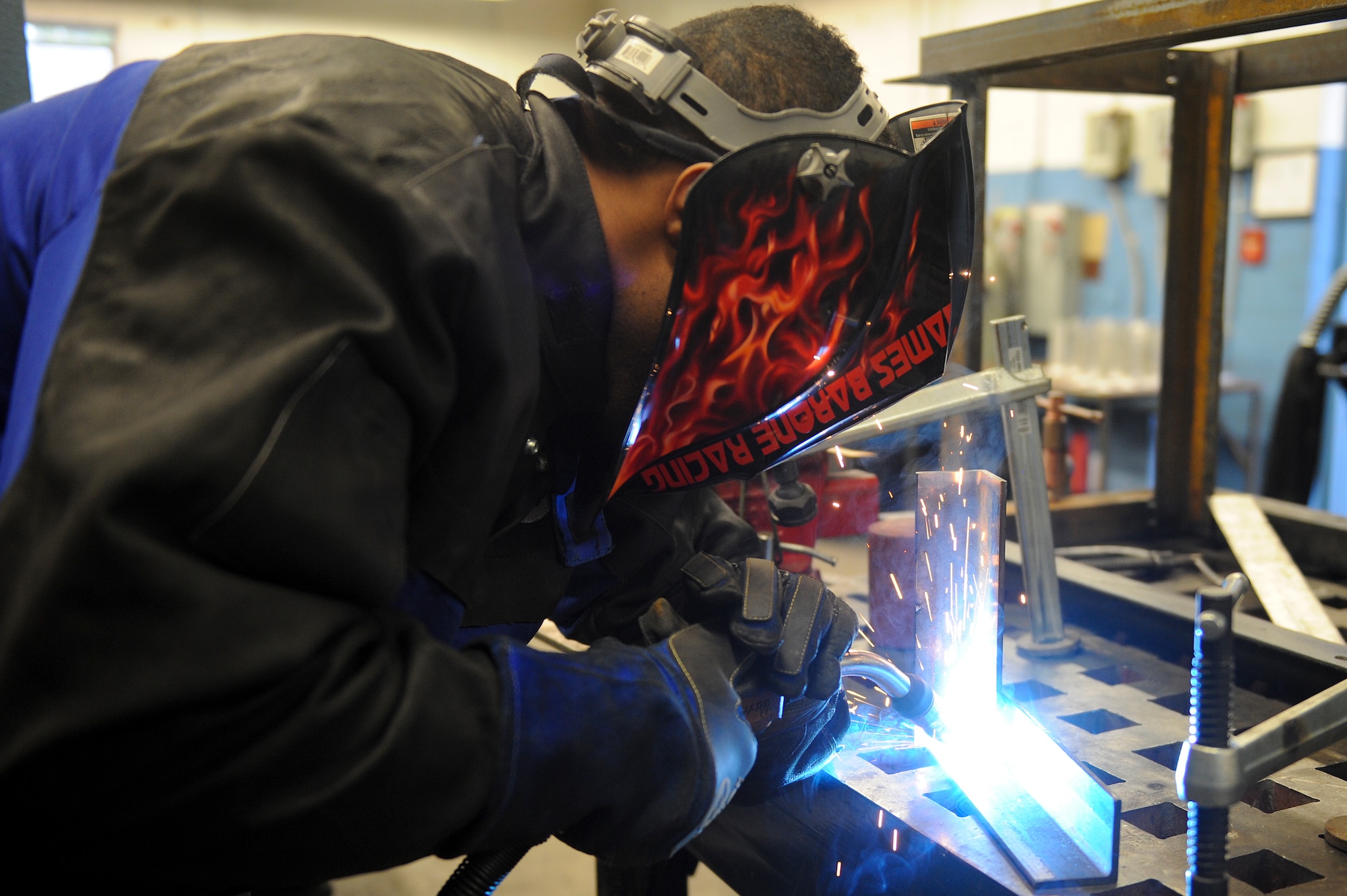Typical Welding Repair Service Issues and Exactly How to Address Them Efficiently
Welding repair work frequently run into a variety of issues that can threaten the integrity of the end product. Usual troubles include insufficient infiltration, porosity, and misalignment, to name a few. Each problem presents special obstacles that call for details approaches for resolution. Understanding these problems is important for welders intending to improve their results and skills. This discussion will discover these common welding repair work issues and efficient approaches to resolve them.
Inadequate Infiltration
Insufficient penetration takes place when the weld metal fails to fully fuse with the base material, resulting in weak joints and possible structural failures. This issue typically stems from not enough heat input, inaccurate electrode angle, or improper welding rate. Welders may come across poor infiltration because of a miscalculation of the required criteria for a details material density or kind. In addition, contamination on the base product's surface area can prevent effective bonding, aggravating the trouble. To deal with inadequate infiltration, welders should guarantee ideal setups on their devices and maintain a tidy job surface area. Regular evaluation of welds is advised to identify any type of deficiencies early, enabling prompt improvements and the prevention of endangered structural stability in welded settings up.
Porosity
Porosity is a common issue in bonded joints that manifests as tiny gas bubbles caught within the weld metal. This problem can compromise the integrity of the weld, leading to lowered toughness and prospective failing under stress and anxiety. Montana Mobile Welding and Repair. Porosity normally emerges from contamination, wetness, or inappropriate welding strategies, which allow gases to escape into the molten weld swimming pool. To resolve porosity, welders should assure proper surface prep work, preserve a clean workplace, and use appropriate welding parameters. Furthermore, picking the right filler product and protecting gas can mitigate gas entrapment. Routine evaluation and screening of welds can assist identify porosity early, assuring prompt corrective actions are taken, thus maintaining the quality and reliability of the welded structure
Imbalance
Imbalance in welding can emerge from different variables, consisting of inappropriate arrangement and thermal development. Understanding the source is vital for effective resolution. Several correction techniques are readily available to straighten elements and ensure structural integrity.
Sources of Misalignment
Welding misalignment often comes from a range of underlying issues that can compromise structural stability. One main reason is improper fit-up of elements before welding, which can bring about spaces and irregular surfaces. Variations in thermal growth during the welding process can also cause distortion, especially if the products being joined have different coefficients of development. In addition, inadequate fixturing and securing may fail to hold components safely in location, resulting in motion during welding. Poorly conserved equipment, including welding makers and tools, may present incongruities in the weld grain, more contributing to misalignment. Lastly, operator error, coming from insufficient training or experience, can likewise play a significant role in creating misaligned welds.
Modification Methods Readily Available
Dealing with misalignment properly requires a combination of rehabilitative methods tailored to the certain concerns at hand. One common approach is the use of jigs or fixtures to hold components in the correct placement throughout welding, making certain regular alignment. In addition, preheating the materials can help in reducing distortion and enhance fit-up. For substantial misalignment, mechanical adjustment techniques, such as using hydraulic jacks or clamps, can be employed to remedy the setting before welding. Post-weld warm treatment may also be required to alleviate stress and anxieties caused by misalignment. Ultimately, mindful evaluation and change throughout the arrangement stage can avoid misalignment concerns from coming to be significant problems, advertising a smoother welding procedure and enhancing total structural stability.
Distortion
Distortion is an usual challenge in welding that can occur from various variables, consisting of uneven home heating and cooling. Understanding the sources of distortion is important for applying efficient prevention strategies. Addressing this issue not only boosts structural stability however also improves the general high quality of the weld.
Sources of Distortion
When subjected to the website here intense warmth of welding, products typically go through changes that can cause distortion. This sensation largely arises from thermal expansion and contraction during the welding process. As the weld location warms up, the material expands; upon air conditioning, it acquires, which can produce internal tensions. Additionally, irregular heating across a workpiece can intensify these stresses, resulting in bending or bending. The kind of material additionally plays a considerable duty; steels with differing thermal conductivity and coefficients of expansion may react in different ways, leading to uncertain distortions. Inadequate joint layout and poor fixturing can add to misalignment throughout welding, increasing the probability of distortion. Comprehending these reasons is vital for efficient welding repair service and prevention strategies.
Prevention Techniques
Reliable prevention strategies for distortion during welding concentrate on regulating warmth input and making certain proper joint layout. Maintaining a regular warmth input assists to lessen thermal expansion and tightening, which can lead to distortion. Utilizing methods such as preheating the work surface can likewise minimize the temperature level gradient, promoting uniform heating. Furthermore, picking appropriate joint designs, such as T-joints or lap joints, can improve security and decrease anxiety focus. Executing appropriate fixturing to safeguard the work surfaces in position better aids in maintaining alignment during the welding process. Staggered welding sequences can distribute heat extra uniformly, preventing localized distortion. By using these approaches, welders can substantially reduce the possibility of distortion and improve the general top quality of their welds.
Fracturing
Splitting is an usual concern come across in welding fixings, frequently resulting from various aspects such as incorrect cooling rates, material option, or insufficient joint preparation. The incident of cracks can significantly jeopardize the stability of the weld, leading to potential failings during procedure. To address this problem, welders click to investigate need to initially analyze the root causes, ensuring that materials work and properly picked for the specific application. Furthermore, managing the cooling price throughout the welding process is essential; rapid air conditioning can induce anxiety and cause breaking. Correct joint style and preparation additionally add to lessening the danger. Carrying out these strategies can boost weld top quality and toughness, ultimately minimizing the probability of cracking in finished weldments.

Incomplete Combination
A considerable problem in welding repair work is incomplete fusion, which happens when the weld metal does not effectively bond with the base material or previous weld passes - Montana Mobile Welding and Repair. This issue can bring about weak points in the joint, potentially jeopardizing the honesty of the welded framework. Variables adding to insufficient blend include not enough warmth input, improper welding technique, and contamination of the surface areas being joined. To resolve this problem efficiently, welders need to assure correct pre-weld cleansing and surface area preparation, as well as readjust their welding parameters to accomplish adequate penetration and blend. Regular evaluation throughout the welding process can likewise help recognize insufficient fusion early, enabling prompt corrective steps to boost the overall high quality of the weld
Overheating
While welding repairs can enhance architectural integrity, overheating presents a significant difficulty that can bring about product deterioration. Extreme warmth throughout welding can change the mechanical buildings of metals, resulting in minimized stamina, boosted brittleness, and warping. This phenomenon is particularly important in high-stress applications where architectural integrity is vital. Determining overheating can involve aesthetic assessments for discoloration or distortion, in addition to keeping an eye on temperature throughout the welding procedure. To mitigate the threats connected with getting too hot, welders should utilize suitable methods, such as controlling heat input, adjusting travel speed, and using suitable filler products. Furthermore, applying pre- and post-weld warmth therapies can assist bring back product buildings and boost the total quality of the repair, making certain long-lasting performance and security.
Frequently Asked Questions
What Are the Usual Indicators of a Welding Defect?

How Can I Check My Welds for Quality?
To test welds for quality, one can use visual assessments, ultrasonic testing, and radiographic methods. Each strategy guarantees structural honesty, determines issues, and confirms adherence to defined criteria, eventually boosting the reliability of the welded joints.
What Safety Preventative Measures Should I Take While Welding?
When welding, one ought to focus on security by putting on proper personal safety tools, ensuring correct air flow, securing flammable products away, keeping a clean workspace, and being conscious of surroundings to stop crashes and imp source injuries.
Can I Fix a Weld Without Remodeling the Entire Joint?
Repairing a weld without remodeling the whole joint is feasible, depending upon the damages (Montana Mobile Welding and Repair Belgrade Fabrication). Strategies such as grinding, including filler product, or utilizing a welding process can effectively resolve details defects while preserving the surrounding framework
What Devices Are Crucial for Effective Welding Fixes?
Necessary devices for effective welding repairs include a welding device, wire brush, mill, protective gear, clamps, and filler products. Each tool plays a vital role in ensuring high quality and security throughout the fixing procedure. Porosity generally arises from contamination, moisture, or incorrect welding strategies, which permit gases to leave into the liquified weld swimming pool. Poorly conserved tools, consisting of welding makers and devices, might present disparities in the weld grain, more adding to imbalance. When subjected to the intense heat of welding, materials usually undertake modifications that can lead to distortion. Cracking is an usual problem come across in welding repair work, typically resulting from different factors such as improper air conditioning rates, material selection, or poor joint preparation. A considerable problem in welding fixings is insufficient blend, which occurs when the weld steel does not effectively bond with the base material or previous weld passes.